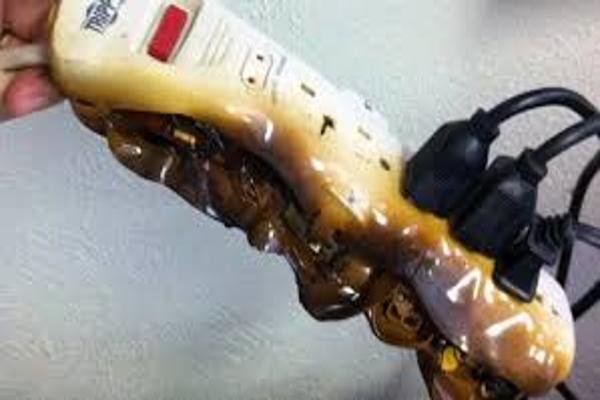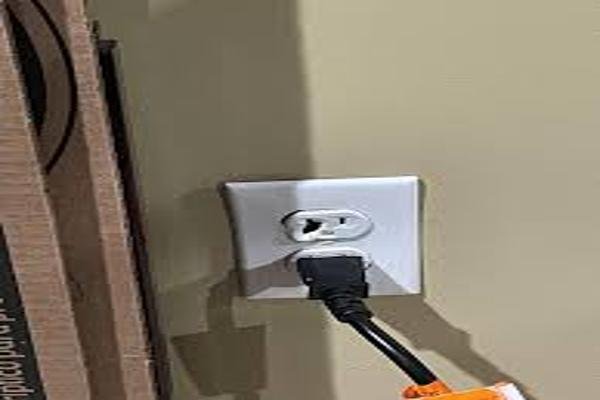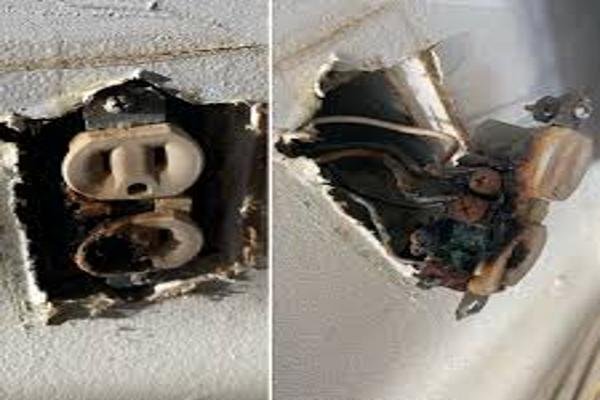
While power strips are convenient for many devices, space heaters require a direct connection to the wall. The high wattage of space heaters can overload power strips, posing fire hazards. Let’s explore why space heaters need dedicated outlets and the safety risks of plugging them into a strip.
Space heaters draw a lot of power—often up to 1500 watts—and need to be plugged directly into a wall socket for safety. Power strips aren’t designed to handle the high electrical load of space heaters. Plugging a space heater into a strip can overload it, causing overheating, damage, or even fire. To prevent risks, always use a space heater with a dedicated outlet.
Let’s discuss why space heaters require special care, whether they need their own outlet, and how to safely plug in a high-wattage heater.
Can I Plug a Space Heater in a Power Strip?
No, plugging a space heater into a power strip is unsafe. These devices pull significant power, and power strips aren’t built to support such a high load. Let’s see why.
Power strips are designed for lower wattage devices like lamps, computers, and TVs, but space heaters can easily exceed the strip’s load capacity. This can cause the strip to overheat, potentially leading to fire. To safely use a space heater, plug it directly into a wall outlet, ensuring the outlet can handle the heater’s power needs.

Space heaters can consume up to 1,500 watts of power, which is more than most power strips1 are designed to handle. When you plug a high-wattage device like this into a power strip, it can draw more current than the strip can safely supply, causing the wiring inside to overheat. In extreme cases, this overheating can melt the strip’s internal components, leading to sparks, smoke, or even fires.
Electrical Load Limits
Most power strips are designed to handle 15 amps (at 120 volts, this equals around 1,800 watts). While that might seem like enough to power a space heater, it’s not just the number of amps that’s a concern—it’s how those amps are distributed. Space heaters need a steady and consistent flow of electricity, which they can get from a direct wall outlet. Power strips are designed for devices that use less power and have more stable current draws.
Fire Hazards
When too much power flows through a strip, it can overheat the internal wires and components.Many space heaters2 also have motors, which can create an additional electrical load that further stresses the power strip’s wiring. With the combination of high power and potential instability, a power strip just isn’t built to handle this load safely.
For your safety, always plug a space heater directly into the wall, and ensure the outlet is in good working condition. If you notice any sparks, warmth around the outlet, or tripped breakers, unplug the heater immediately and have an electrician inspect the wiring.
Should a Space Heater Be Plugged Directly into the Wall?
Yes, space heaters should always be plugged directly into a wall outlet to avoid overloading the wiring. This ensures they receive a stable power supply and minimizes the risk of fire.
Space heaters require a direct connection to a wall outlet to safely operate. They draw a large amount of electricity, and plugging them into power strips or extension cords can cause overheating and fire risks. Ensure the outlet is not overloaded with other devices. For safety, use a dedicated outlet for each space heater.

Space heaters are high-power devices that need to operate at full capacity without interruption. When plugged into a power strip, the combined current draw of the heater and any other devices on the same strip could exceed the strip’s safe operating capacity. Power strips are typically rated for around 15 ampsof current—enough for smaller devices but not for high-wattage appliances like space heaters.
Safety Concerns
The power draw of a space heater can cause an overload on the circuit,especially if multiple high-power devices are connected to the same outlet. This can trigger circuit breakers3, cause overheating, or even lead to electrical fires. For this reason, always plug the heater directly into a wall outlet to ensure it receives the proper current and avoids any safety risks.
If you have several devices that need power and there’s only one outlet available, consider having additional outlets installed by a licensed electrician4 to avoid using a power strip or extension cord. This not only protects your space heater but also ensures the overall safety of your home.
Overloaded Circuits
An overloaded circuit5 may cause the breaker to trip, but if a space heater is plugged into a power strip, there may not be any protection until it’s too late. If the breaker fails to trip, the wires inside the strip or outlet could overheat, causing serious risks like fires.
Does a Space Heater Need Its Own Outlet?
Yes, a space heater should have its own dedicated outlet to ensure safe operation. Plugging it into an overloaded or shared outlet can result in overheating and potential hazards.
A space heater should always have its own outletto prevent overloading. Sharing an outlet with other high-power devices—like microwaves, refrigerators, or air conditioners—can cause the outlet to overheat. For safety, don’t use extension cords or power strips. Directly plugging the heater into the wall allows it to draw the necessary power without overloading circuits.

One of the primary safety concerns with space heaters is ensuring they are not competing for power with other appliances. When multiple devices share an outlet, the circuit can become overloaded. This can cause the wires to overheat, leading to potential fire hazards. Plugging a space heater into a dedicated outlet ensures that it has a stable, sufficient power supply, reducing the risk of overloading or circuit failure.
Importance of Dedicated Outlets
Space heaters use a lot of power to generate heat—often over 1,500 watts. When plugged into a shared outlet, the heater may pull more current than the outlet was designed to handle, causing the wiring to overheat. In extreme cases, this could lead to melted wires, sparks, or fire. A dedicated outlet ensures that the heater receives the proper voltage and current without overloading the circuit.
Overloaded Circuits and Breakers
An overloaded circuit may trip the breaker, cutting off power, but if there’s no breaker protection—like when a power strip is used—the risk of electrical fires increases significantly. For safety, always plug space heaters directly into a wall outlet, and never use a power strip or extension cord for high-wattage devices like heaters.
Yes, you can plug a 1,500-watt space heater into an outlet, as long as the outlet is properly rated. Ensure the circuit can handle the load without overloading, and avoid using a power strip.
A 1,500-watt space heater typically draws around 12.5 amps at 120V, which is the standard for most home outlets. Ensure the circuit is rated for 15 amps or higher to avoid overloading. A dedicated outlet for your heater ensures it draws sufficient power and remains safe to use. Always avoid using extension cords or power strips.

Avoid Power Strips and Extension Cords
While the outlet may be rated for 15 amps, plugging the heater into a power strip or extension cord increases the risk of overheating6. Power strips and extension cords are generally designed for low-power devices and may not be able to safely handle the high current draw of a space heater. Using these can increase the risk of fire, especially if the heater is left running for long periods.
Regular Inspections
Make sure the outlet is in good condition, and inspect the cord and plug of the heater regularly for damage7. Any signs of wear, fraying, or scorch marks should prompt you to stop using the heater and have it inspected. Don’t forget to check your circuit breaker to ensure it’s rated for at least 15 amps for safe operation.
Conclusion
Never plug a space heater into a power strip due to safety risks from overloading. Always use a dedicated wall outlet for your heater, and ensure your circuit can handle its power requirements. Regularly inspect your setup for damage to ensure safe, efficient operation of your space heater.
-
Understanding the safety limits of power strips can help prevent overheating and potential fire hazards when using high-wattage devices. ↩
-
Exploring the risks associated with space heaters and power strips can help you make informed decisions for safety and efficiency. ↩
-
Learning about circuit breakers can enhance your knowledge of home safety and electrical systems, crucial for preventing fires. ↩
-
Exploring this resource will help you understand the importance of hiring a licensed electrician for safe installations. ↩
-
This link will provide insights into overloaded circuits and tips to prevent potential hazards in your home. ↩
-
Understanding the risks associated with using power strips can help you prevent potential fire hazards in your home. ↩
-
Regular inspections can ensure your space heater operates safely, reducing the risk of electrical fires. ↩






